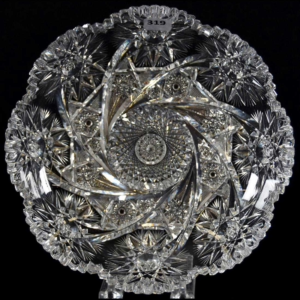Flint stone – properties, virtues & benefits
Flintstone, also known as flint, is a hard, dense sedimentary rock often used to make prehistoric tools and weapons. It is characterized by its ability to produce sparks when struck against a Piece of steel, making it useful in modern lighters and firelighters. Discover the characteristics and uses of flint stone in our comprehensive guide.
SILEX CHARACTERISTICS
- Chakra: /
- Properties: Sedimentary rock, hard, dense, used for prehistoric tools and weapons, produces sparks.
- Astrology: /
- Zodiac: /
- Elements: /.
- Colors: Gray, black, brown, beige.
- Hardness: 7 on the Mohs scale.
- Chemical Formula: SiO2 (silicon dioxide).
- Associated god: /
SILEX – ITS HISTORY
When we think of prehistory, we immediately think of flint. It’s an essential part of our history, as it enabled the creation of the first tools around 2.3 million years ago. Flint is a robust, weather-resistant stone, often found in the form of pebbles, platelets or thick slabs near streams and beaches. Early users of this stone therefore searched these areas for usable stones, and this is still the case today. To break it, our ancestors used elk antlers, animal bones or other natural materials. Like other cryptocrystalline rocks, flint has a predictable and easily recognizable fracture, called a conchoidal fracture. When cut, it has a very sharp, robust edge, making it highly sought-after by prehistoric man. It was used daily for hunting, butchering animals, cutting up carcasses, making tools and lighting fires. Contrary to popular belief, it is not possible to produce fire by striking two Pieces of flint together. In fact, it has to be in contact with steel or a material containing a lot of iron to produce sparks.
There are many tools made from flint, such as axes, harpoons, knives, chisels, drills and fishhooks. The use of these tools marked a turning point in humanity’s way of life, as people’s survival depended on them. People were willing to travel long distances to find flint, which led to the first commercial exchanges. Flint became a kind of currency of exchange between populations and a creator of links between several territories. Over time, flint was used to make arrowheads and spearheads, light fires, grind grain in mills and make flintlock rifles. In France, the weapon was used in Napoleon’s armies. Today, flint is polished to make jewelry and is used in lithotherapy.
The properties and composition of flint were studied by French researchers such as François Jouannet and Casimir Picard in the 1820s, when the world’s attention was focused on antiquity. Later, prehistorians such as Léon Coutil, Victor Commont and Hippolyte Muller studied the methods used to create tools and attempted to reproduce them. François Bordes is the prehistorian best known for his work on prehistoric industries in the 20th century. During this period, the so-called “pressure” cutting technique was discovered, which involves exerting strong pressure on a block to fracture it and detach a fragment. This technique requires the ability to control the way rocks break when struck. Thanks to its composition, flint is one of the best minerals for this cutting technique.
SILEX STONE – ITS ORIGIN AND COMPOSITION
Flint is a cryptocrystalline rock formed from crystals invisible to the naked eye, making it homogeneous and opaque. It consists mainly of silica, which can take different forms such as chalcedony, quartz and opal. The color of flint varies according to the opal content, and can be gray, buff-yellow, Pinkish or brownish-black. Flint is dense, hard and brittle, with a fine, compact texture that distinguishes it from limestone. It forms under the sea or lakes from a silica-rich mud derived from the skeletal remains of marine organisms or volcanic ash. This mud penetrates and fills the voids left by limestone or chalk, solidifying to form a nodule. Crystallization can be accelerated by sponge or sea urchin fossils. In France, flint deposits are very abundant, particularly in the Indre-et-Loire, Normandy, Paris, Champagne-Ardenne, Picardy, Nord and Sud-Est regions. The Grand Pressigny deposit is renowned for its excellent-quality rocks and has been the subject of much research.
SILEX STONE – VERTIES AND PROPERTIES
SILEX ON THE PSYCHOLOGICAL LEVEL
Flint is not only of interest to archaeologists and jewellers, because due to its strong energy, it is reputed to make its owner brave, strong and enterprising like a warrior. It can also rekindle the inner flame and increase physical and mental fighting sPirit. Wearing a Piece of flint around the neck as an amulet, it is recommended to people who need to assert themselves, firmly defend their oPinion, convince people and make quick and correct decisions. It has been a strong symbol for teachers, doctors, soldiers, lawyers and politicians, providing the self-esteem needed to express oneself freely. It can also relieve mental stress and old complexes, and help shy people and those lacking in self-confidence. Astrologers generally recommend its use for all zodiac signs except Pisces, as it can make people born under this sign aggressive, reckless and irritable. It is particularly recommended for busy people who wish to take the shortest, quickest route to success.
Flint is considered an ideal solution for protecting the owner’s home, particularly against lightning, as it accumulates within itself all the negative energy that enters the house and destroys it, especially when placed above a door. It has also been considered the protector of travelers since ancient times, protecting people from aggression and warning them against fraud and deceit. It was also used in religious and magical rites by Amerindians and Vikings, who regarded knives made of this material as family gods and blessed them in beer and melted butter. It ward off evil sPirits and negative energies that can grow within us all. It is particularly suited to people who suffer from jealousy or who are extremely hot-tempered, as it detects negative vibes and suggests ways of avoiding conflict, resulting in a more developed sense of intuition.
.
Flintstone has many advantages in various fields, including financial and relational. It has been reputed to protect the home against lightning and to protect travelers since ancient times. It is often used to ward off negative energies and evil sPirits. It can also help to manage money more effectively and make informed investment decisions. Specialists recommend it to help recover from toxic relationships and boost self-esteem. It can also help with sPirit communication and chakra harmonization. All in all, its benefits are many and varied, both psychically and physically.
SILEX ON THE PHYSICAL LEVEL
Flint is a very powerful rock with considerable physical and psychic virtues. It is often underestimated, but it is an essential ally for improving our well-being. This stone is made up of crystals invisible to the naked eye, and is composed of silica. It can take on different colors, such as gray, buff, Pink or black-brown. It is very hard and dense, and can be compared to glass due to its scaly fracture and fine, compact texture. It forms mainly under the sea or under lakes, from a fine, silica-rich mud that solidifies and forms a nodule.
Flintstone is renowned for its ability to ignite sparks and rekindle our inner flame. It is considered a strong symbol for teachers, military personnel, lawyers and politicians, as it provides the self-esteem needed to express oneself freely. It can reduce mental stress by relieving feelings of inferiority and ridding its owner of old complexes. This stone is also beneficial for financial management, love and family relationships, and protection against evil sPirits. It is used in lithotherapy to regulate the kidneys, promote blood circulation, prevent nightmares, improve skin appearance and relieve headaches.
In short, flint stone is a wise choice for those seeking to optimize their well-being. Its vibration connects to all the physical chakras, supporting, balancing and aligning their energies so we can have energetic stability, and then bring our subtle bodies towards harmonizing our chakras. It’s a precious instrument to have with you for mental and physical recharging, even if it doesn’t shine as brightly as a crystal or have a very vivid color.
SILEX STONE – CLEAN AND RECHARGE
Since flint is a natural rock, it doesn’t need to be energetically recharged like crystals. However, if you wish to clean your flint stone, you can simply wash it with warm water and mild soap to remove dirt and residue. Avoid using harsh chemicals or hot water, as these can damage the stone. You can also gently scrub the stone with a soft toothbrush to remove stubborn dirt.
It’s important to note that flint is a very hard and resistant stone, so it doesn’t easily fear scratches or damage. However, it can break or crack if you accidentally hit it or handle it with too much force. It is therefore advisable to handle it with care.
In summary, to clean your flint stone, you can simply wash it with lukewarm water and mild soap. As for energetic recharging, this is not necessary as flint has no specific energetic properties.
WHERE DOES THE NAME SILEX COME FROM?
The name “flint” comes from the Latin “silex” meaning “hard stone”. It has been used to refer to a variety of siliceous sedimentary rocks, including chert, jasper and flint itself.
Flint is also known as “flint stone” because it was widely used to make prehistoric tools and weapons due to its hardness, toughness and ability to produce sparks when struck against a Piece of steel.
Today, flint is often used in modern lighters and firelighters because of its ability to produce sparks, but it is also used in the manufacture of jewelry and decorative carved stone objects.
SILEX STONE SUMMARY
Silex stone, also known as flint or black flint, is a very hard, sharp sedimentary rock composed mainly of silica. It was widely used in prehistoric times to make tools such as blades, scrapers and arrowheads due to its ability to be cut with precision.
Flint is often associated with archaeological sites dating back to the Lower, Middle and Upper Palaeolithic, but it was also used later in the manufacture of weapons and tools up to the Iron Age.
Nowadays, flint is mainly used in the production of matches and in the creation of decorative objects and crafts.

